SLVS908D February 2009 – June 2015 TPS22949
PRODUCTION DATA.
- 1 Features
- 2 Applications
- 3 Description
- 4 Revision History
- 5 Description (continued)
- 6 Pin Configuration and Functions
-
7 Specifications
- 7.1 Absolute Maximum Ratings
- 7.2 ESD Ratings
- 7.3 Recommended Operating Conditions
- 7.4 Thermal Information
- 7.5 Electrical Characteristics
- 7.6 Current Limiter Electrical Characteristics
- 7.7 Low-Noise LDO Regulator Electrical Characteristics
- 7.8 Current Limiter Switching Characteristics
- 7.9 Typical Characteristics
- 8 Detailed Description
- 9 Application and Implementation
- 10Power Supply Recommendations
- 11Layout
- 12Device and Documentation Support
- 13Mechanical, Packaging, and Orderable Information
Package Options
Mechanical Data (Package|Pins)
- DRG|8
Thermal pad, mechanical data (Package|Pins)
- DRG|8
Orderable Information
7 Specifications
7.1 Absolute Maximum Ratings(1)
| MIN | MAX | UNIT | ||||
|---|---|---|---|---|---|---|
| VI | Input voltage | VIN, EN1, EN2, V+ | –0.3 | 6 | V | |
| VOUTCL | Current limiter output voltage | VIN + 0.3 | V | |||
| TJ | Operating junction temperature | –40 | 105 | °C | ||
| Tstg | Storage temperature | –65 | 150 | °C | ||
(1) Stresses beyond those listed under Absolute Maximum Ratings may cause permanent damage to the device. These are stress ratings only, which do not imply functional operation of the device at these or any other conditions beyond those indicated under Recommended Operating Conditions. Exposure to absolute-maximum-rated conditions for extended periods may affect device reliability.
7.2 ESD Ratings
| VALUE | UNIT | |||
|---|---|---|---|---|
| V(ESD) | Electrostatic discharge | Human body model (HBM), per ANSI/ESDA/JEDEC JS-001(1) | ±3500 | V |
| Charged device model (CDM), per JEDEC specification JESD22-C101(2) | ±1000 | |||
(1) JEDEC document JEP155 states that 500-V HBM allows safe manufacturing with a standard ESD control process.
(2) JEDEC document JEP157 states that 250-V CDM allows safe manufacturing with a standard ESD control process.
7.3 Recommended Operating Conditions
| MIN | NOM | MAX | UNIT | ||
|---|---|---|---|---|---|
| VIN | Input voltage(1) | 1.62 | 4.5 | V | |
| VOUTCL | Current limiter output voltage | VIN | V | ||
| V+ | Supply voltage | 2.6 | 5.5 | V | |
| CIN | Input capacitor | 1 | μF | ||
| TA | Ambient free-air temperature | –40 | 85 | °C | |
| CONTROL INPUTS (EN1, EN2) | |||||
| VIH | High-level input voltage | 1.4 | 5.5 | V | |
| VIL | Low-level input voltage | 0.4 | V | ||
(1) See the Application and Implementation.
7.4 Thermal Information
| THERMAL METRIC(1) | TPS22949x | UNIT | ||
|---|---|---|---|---|
| YZP [DSBGA] | DRG [WSON] | |||
| 8 PINS | 8 PINS | |||
| RθJA | Junction-to-ambient thermal resistance | 105.8 | 51.3 | °C/W |
| RθJC(top) | Junction-to-case (top) thermal resistance | 1.6 | 65.4 | °C/W |
| RθJB | Junction-to-board thermal resistance | 10.8 | 25.9 | °C/W |
| ψJT | Junction-to-top characterization parameter | 3.1 | 1.3 | °C/W |
| ψJB | Junction-to-board characterization parameter | 10.8 | 26 | °C/W |
| RθJC(bot) | Junction-to-case (bottom) thermal resistance | N/A | 6.1 | °C/W |
(1) For more information about traditional and new thermal metrics, see the Semiconductor and IC Package Thermal Metrics application report, SPRA953.
7.5 Electrical Characteristics
TA = –40°C to 85°C (unless otherwise noted)| PARAMETER | TEST CONDITIONS | MIN | TYP(1) | MAX | UNIT | ||
|---|---|---|---|---|---|---|---|
| IGND | Ground pin current | EN1 and EN2 = V+
V+ = VOUT + 1.4 V or 2.5, whichever > 5.5 V, VOUTCL ≥ VOUTLDO + 0.5 V IOUT2 = 0 mA |
85 | 110 | μA | ||
| IGNDCL | Ground pin current (current limiter only) | EN1 = V+ and EN2 = 0 | 40 | 75 | μA | ||
| IGND(OFF) | OFF-state ground pin current | EN1 and EN2 = GND, VOUTCL = Open, VOUTLDO = Open |
VIN = V+ = 3.3 V | 2 | μA | ||
| VIN = 3.6 V, V+ = 5.5 V | 6 | ||||||
| IEN2 | Enable pin 2 current, enabled | VEN2 = V+ =5.5 V, VIN = 4.5 V | 1 | μA | |||
| IEN1 | Enable pin 1 current, enabled | VEN1 = V+ = 5.5 V, VIN = 4.5 V | 1 | μA | |||
| Thermal shutdown | Shutdown threshold (TA) | TPS22949 | 122 | °C | |||
| TPS22949A | 135 | ||||||
| Return from shutdown | TPS22949 | 112 | |||||
| TPS22949A | 120 | ||||||
| Hysteresis | TPS22949 | 10 | |||||
| TPS22949A | 10 | ||||||
(1) Typical values are at VIN = 3.3 V and TA = 25°C.
7.6 Current Limiter Electrical Characteristics
over operating free-air temperature range, V+ = 3.3 V, EN1 = V+, EN2 = GND (unless otherwise noted)| PARAMETER | TEST CONDITIONS | TA | YZP PACKAGE | DRG PACKAGE | UNIT | ||||||
|---|---|---|---|---|---|---|---|---|---|---|---|
| MIN | TYP | MAX | MIN | TYP | MAX | ||||||
| rON | ON-state resistance | IOUT = 20 mA | VIN = 4.5 V | 25°C | 0.3 | 0.4 | 0.4 | 0.5 | Ω | ||
| Full | 0.5 | 0.6 | |||||||||
| VIN = 3.3 V | 25°C | 0.35 | 0.6 | 0.45 | 0.7 | ||||||
| Full | 0.7 | 0.8 | |||||||||
| VIN = 2.5 V | 25°C | 0.4 | 0.7 | 0.5 | 0.8 | ||||||
| Full | 0.8 | 0.9 | |||||||||
| VIN = 1.8 V | 25°C | 0.6 | 0.9 | 0.7 | 1 | ||||||
| Full | 1.0 | 1.1 | |||||||||
| VIN = 1.62 V | 25°C | 0.7 | 1.0 | 0.8 | 1.1 | ||||||
| Full | 1.1 | 1.2 | |||||||||
| ILIM | Current limit | VOUT = 3 V | VIN = 3.3 V | Full | 100 | 150 | 200 | 100 | 150 | 200 | mA |
| ILIM (INRUSH) | Power-ON inrush current limit (TPS22949A only) | VOUT = 3 V | VIN = 3.3 V | Full | 750 | 750 | |||||
| UVLO-CL | Undervoltage shutdown | VIN increasing | 1.39 | 1.49 | 1.59 | 1.39 | 1.49 | 1.59 | V | ||
| Undervoltage shutdown hysteresis | 30 | 30 | mV | ||||||||
| OC output logic low voltage | ISINK = 10 mA | VIN = 4.5 V | Full | 0.1 | 0.3 | 0.1 | 0.3 | V | |||
| VIN = 1.8 V | 0.2 | 0.4 | 0.2 | 0.4 | |||||||
7.7 Low-Noise LDO Regulator Electrical Characteristics
over operating free-air temperature range (unless otherwise noted)| PARAMETER | TEST CONDITIONS | MIN | TYP | MAX | UNIT | ||
|---|---|---|---|---|---|---|---|
| VOUTLDO | Output voltage(1) | 1.76 | 1.8 | 1.84 | V | ||
| ΔVOUTLDO/ΔVIN | VIN line regulation | VIN = VOUTLDO + 0.5 V to 4.5 V, IOUT = 1 mA | ±0.1 | %/V | |||
| VIN line transient | ΔVIN = 400 mV, tr = tf = 1 μs | ±2 | mV | ||||
| ΔVOUTLDO/ΔV+ | V+ line regulation | VIN = VOUTLDO + 1.4 V or 2.5 V, whichever is > 5.5 V, IOUT = 1 mA |
±0.1 | %/V | |||
| V+ line transient | ΔVIN = 600 mV, tr = tf = 1 μs | ±5 | mV | ||||
| ΔVOUTLDO/ΔIOUT2 | Load regulation | IOUT2 = 0 to 100 mA (no load to full load) | ±0.01 | %/V | |||
| Load transient | IOUT2 = 0 to 100 mA, tr = tf = 1 μs | ±35 | mV | ||||
| VDO | Dropout voltage (VDO = VIN – VOUTLDO) |
VIN = VOUTLDO(NOM) – 0.1 V, V+ – VOUTLDO(NOM) = 1.4 V, IOUT = 100 mA |
110 | 200 | mV | ||
| VIN PSRR | Power supply rejection ratio | VOUTCL – VOUTLDO ≥ 0.5 V, V+ = VOUTLDO + 1.4 V, IOUT = 100 mA, |
f = 10 Hz | 75 | dB | ||
| f = 100 Hz | 75 | ||||||
| f = 1 kHz | 80 | ||||||
| f = 10 kHz | 80 | ||||||
| f = 100 kHz | 85 | ||||||
| f = 1 MHz | 85 | ||||||
| V+ PSRR | Power supply rejection ratio | VOUTCL – VOUTLDO ≥ 0.5 V, V+ = VOUTLDO + 1.4 V, IOUT = 100 mA, |
f = 10 Hz | 80 | dB | ||
| f = 100 Hz | 80 | ||||||
| f = 1 kHz | 75 | ||||||
| f = 10 kHz | 65 | ||||||
| f = 100 kHz | 55 | ||||||
| f = 1 MHz | 35 | ||||||
| VN | Output noise voltage | V+ ≥2.5 V, VOUTLDO = VOUTCL + 0.5 V |
BW = 10 Hz to 100 kHz | 50 | μVrms | ||
| tSTR | Start-up time | VOUT = 95%, VOUT(NOM), IOUT = 100 mA, COUT = 2.2 μF |
130 | 250 | μs | ||
| UVLO-V+ | Undervoltage lockout | V+ rising | 2.3 | 2.45 | 2.55 | V | |
| Hysteresis | V+ falling | 150 | mV | ||||
(1) LDO output voltage is fixed at 1.8 V. However, output voltages from 0.9 V to 3.6 V in 50-mV increments are available through the use of innovative factory EEPROM programming; minimum order quantities may apply. Contact factory for details and availability.
7.8 Current Limiter Switching Characteristics
VIN = 3.3 V, TA = 25°C, RL = 500 Ω, CL = 0.1 μF (unless otherwise noted)| PARAMETER | TEST CONDITIONS | MIN | TYP | MAX | UNIT | |
|---|---|---|---|---|---|---|
| tON | Turnon time | RL = 500 Ω, CCL = 0.1 μF | 95 | μs | ||
| tOFF | Turnoff time | RL = 500 Ω, CCL = 0.1 μF | 2 | μs | ||
| tr | VOUT rise time | RL = 500 Ω, CCL = 0.1 μF | 25 | μs | ||
| tf | VOUT fall time | RL = 500 Ω, CCL = 0.1 μF | 10 | μs | ||
| tBLANK | Overcurrent blanking time | 6 | 12 | 18 | ms | |
| tRSTRT | Auto-restart time | 40 | 80 | 120 | ms | |
| tINRUSH | Power-ON inrush current limit time (TPS22949A only) | RL = 500 Ω, CCL = 0.1 μF | 150 | μs | ||
| Short-circuit response time | VIN = VEN1 = 3.3 V, moderate overcurrent condition | 11 | μs | |||
| VIN = VEN1 = 3.3 V, hard short | 5 | |||||
7.9 Typical Characteristics
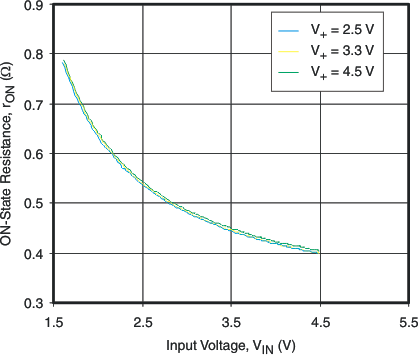
| TA = 25°C |
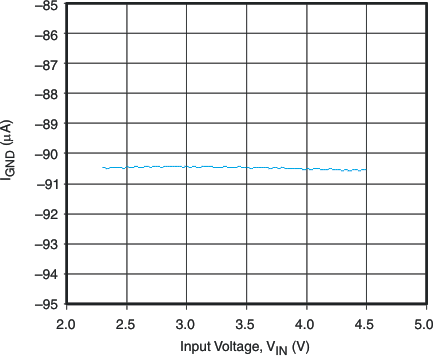
| V+ = 5.5 V |
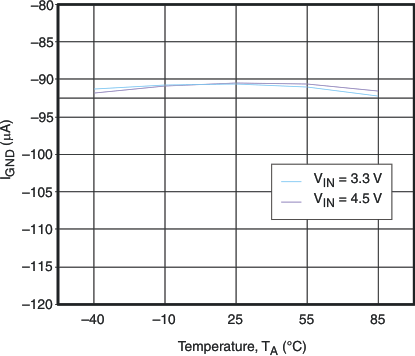
| V+ = 5.5 V |
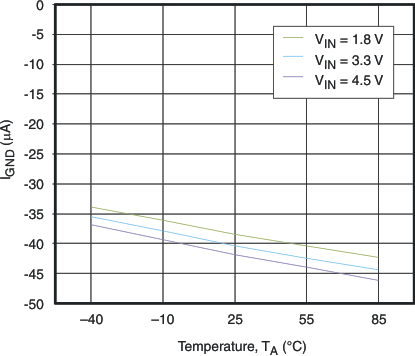
| V+ = 5.5 V |
(Current Limiter Only)
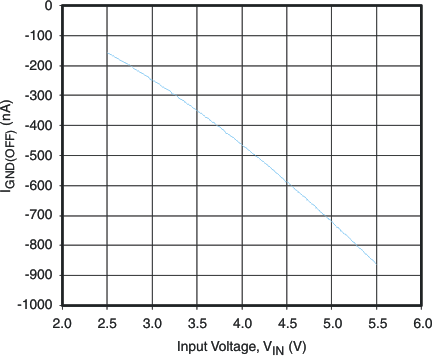
| VIN = V+ |
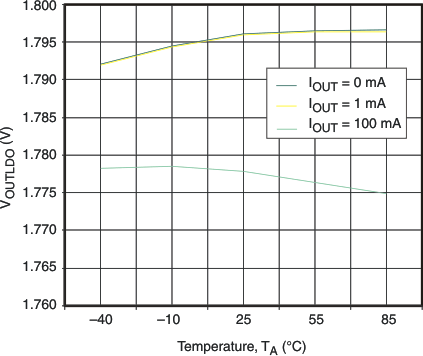 Figure 11. Output Voltage vs Temperature
Figure 11. Output Voltage vs Temperature
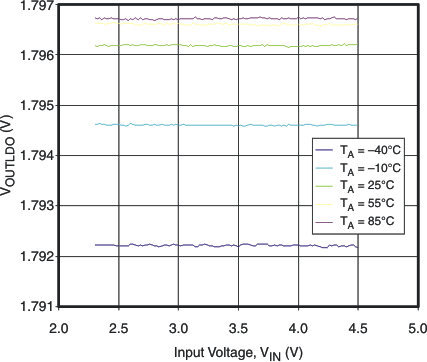
| IOUT = 0 mA |
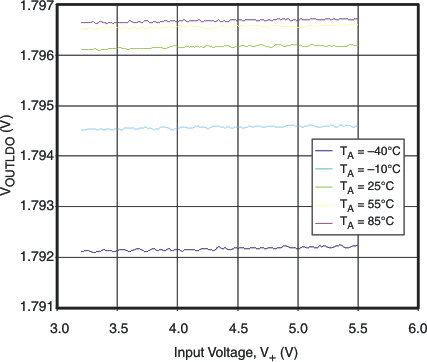
| IOUT = 0 mA |
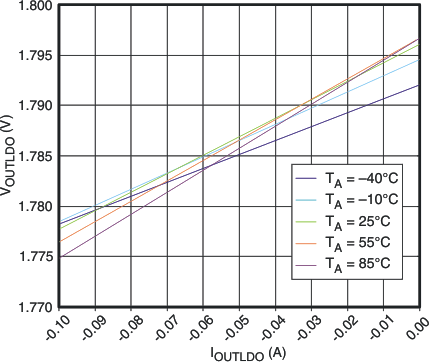
| IOUT = 100 mA |
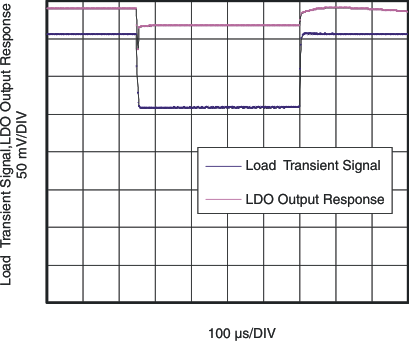 Figure 19. Load Transient
Figure 19. Load Transient
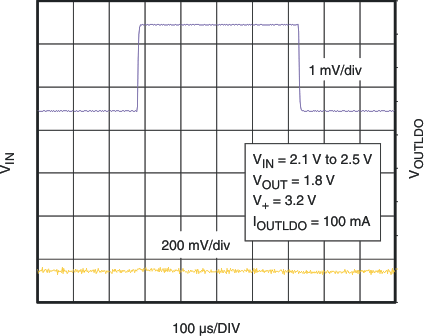 Figure 21. V+ Load Transient
Figure 21. V+ Load Transient
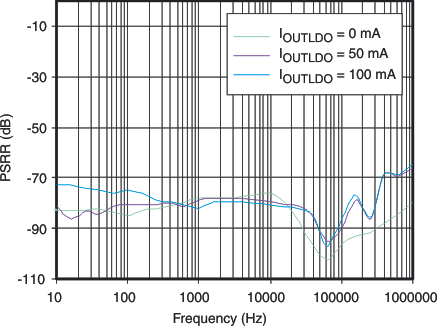 Figure 23. PSRR vs Frequency
Figure 23. PSRR vs Frequency
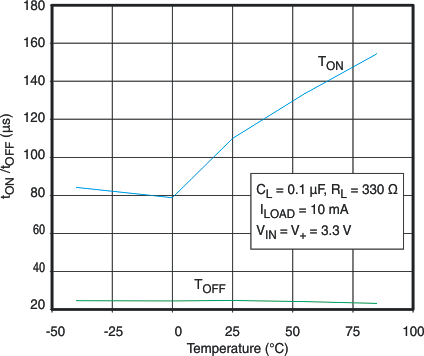 Figure 25. tON/tOFF vs Temperature
Figure 25. tON/tOFF vs Temperature
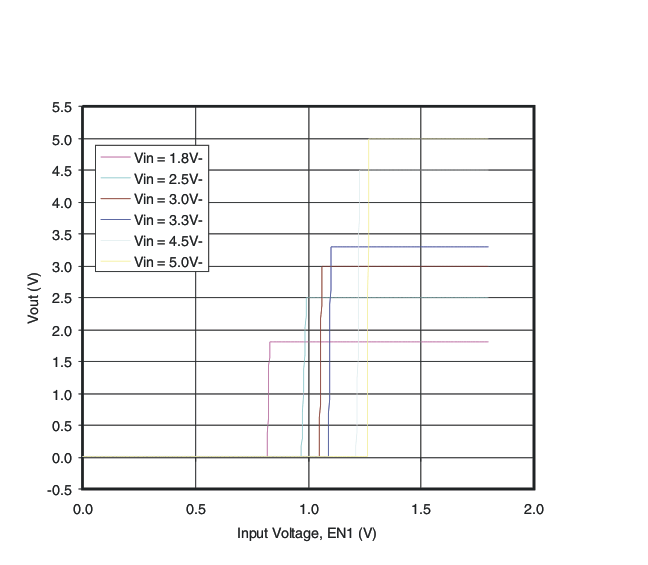
| V+ = 5.5 V |
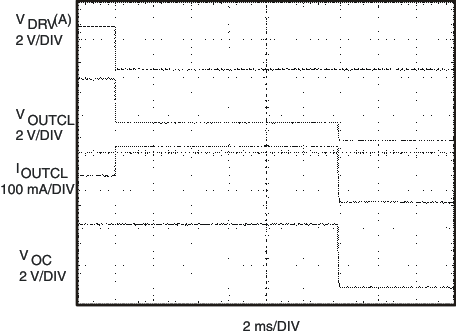
VDRV signal forces the device to go into overcurrent mode.
Figure 29. tBLANK Response
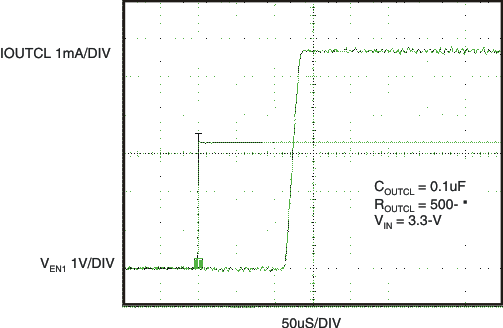
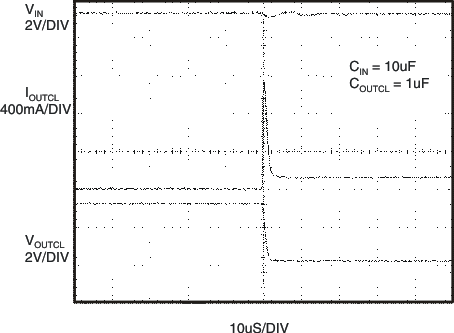 Figure 33. Short-Circuit Response Time
Figure 33. Short-Circuit Response Time(VOUTCL Shorted to GND)
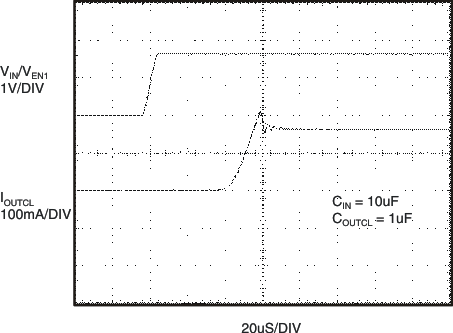 Figure 35. Short-Circuit Response Time (Switch Power Up to Hard Short) (TPS22949)
Figure 35. Short-Circuit Response Time (Switch Power Up to Hard Short) (TPS22949)
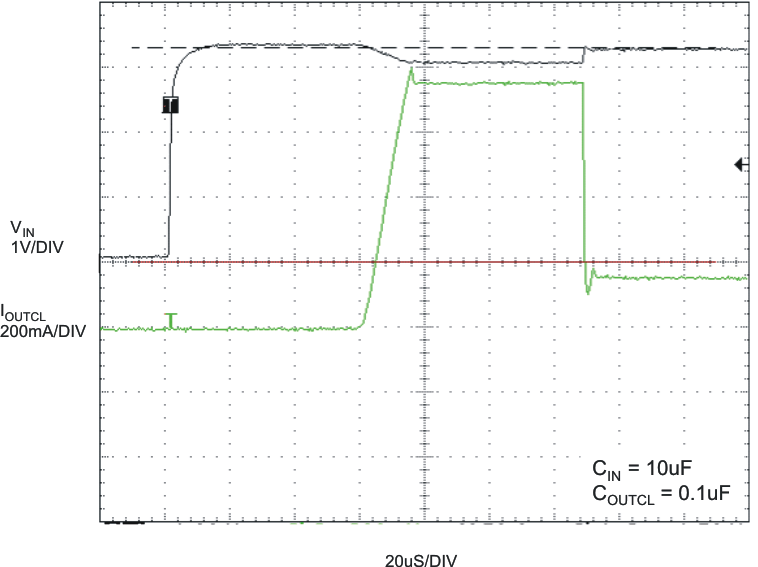 Figure 37. Short-Circuit Response Time (Switch Power Up to Hard Short) (TPS22949A)
Figure 37. Short-Circuit Response Time (Switch Power Up to Hard Short) (TPS22949A)
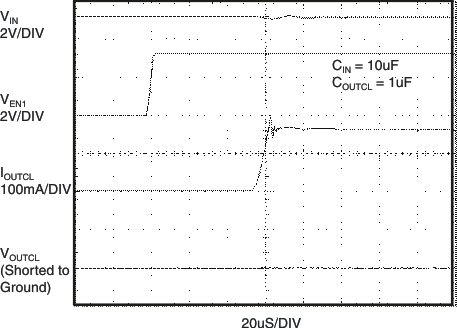 Figure 39. Current Limit Response Time (Current Limiter)
Figure 39. Current Limit Response Time (Current Limiter)
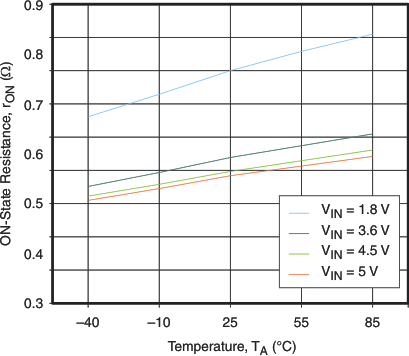
| V+ = 5.5 V |
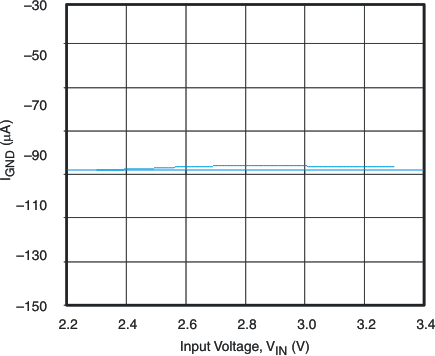
| V+ = 3.3 V |
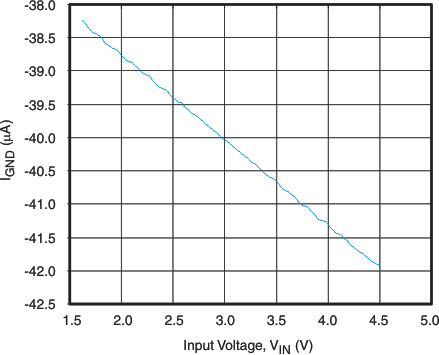
| V+ = 5.5 V |
(Current Limiter Only)
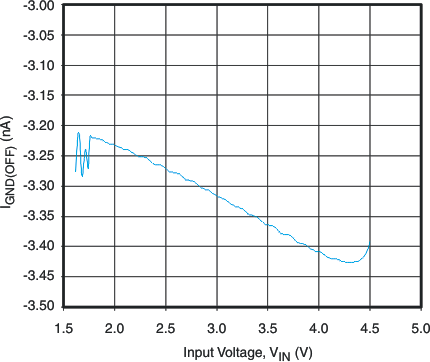
| V+ = 5.5 V |
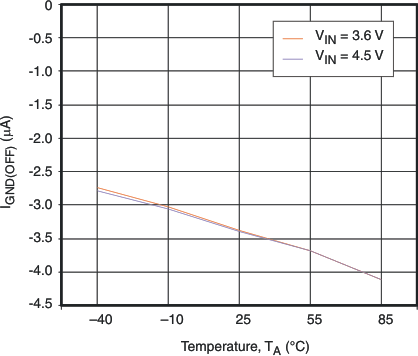
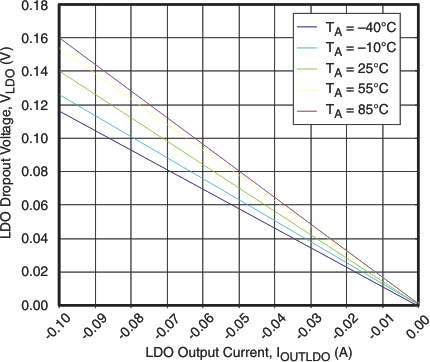 Figure 12. LDO Dropout Voltage vs Output Current
Figure 12. LDO Dropout Voltage vs Output Current
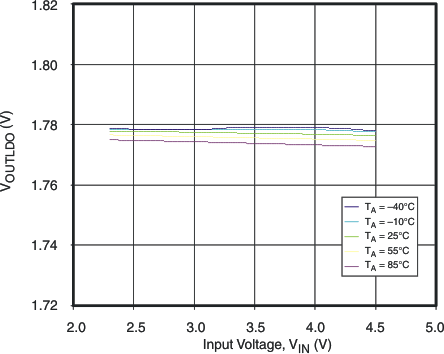
| IOUT = 100 mA |
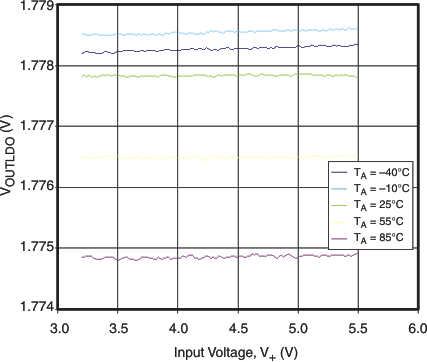
| IOUT = 100 mA |
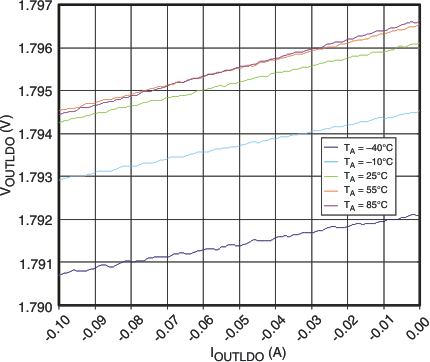
| IOUT = 10 mA |
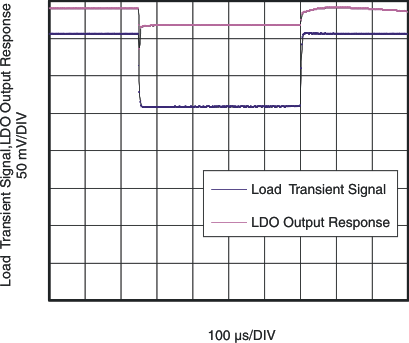 Figure 20. VIN Load Transient
Figure 20. VIN Load Transient
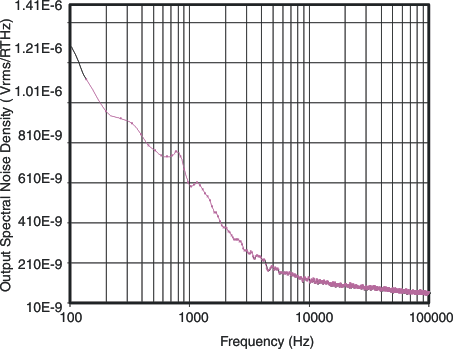 Figure 22. Output Spectral Noise Density vs Frequency
Figure 22. Output Spectral Noise Density vs Frequency
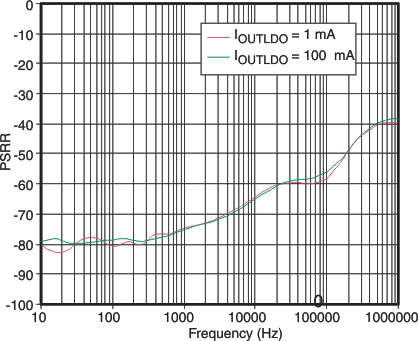 Figure 24. V+ PSRR vs Frequency
Figure 24. V+ PSRR vs Frequency
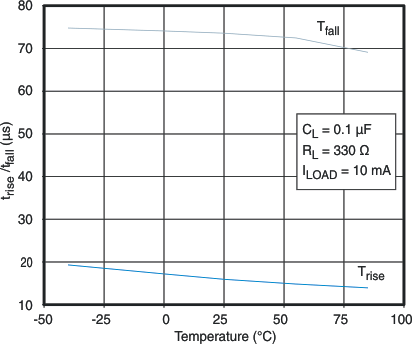 Figure 26. trise/tfall vs Temperature
Figure 26. trise/tfall vs Temperature
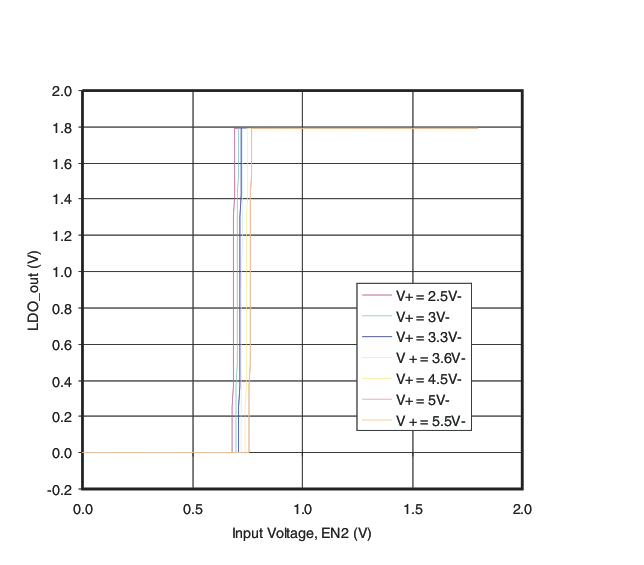
| VIN = 3.3 V |
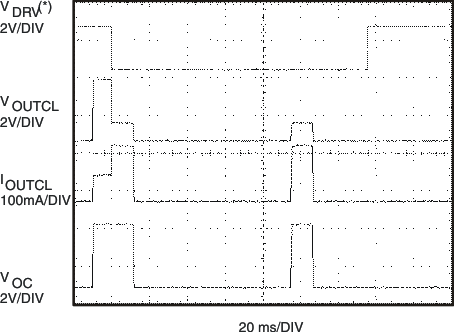
VDRV signal forces the device to go into overcurrent mode.
Figure 30. tRESTART Response
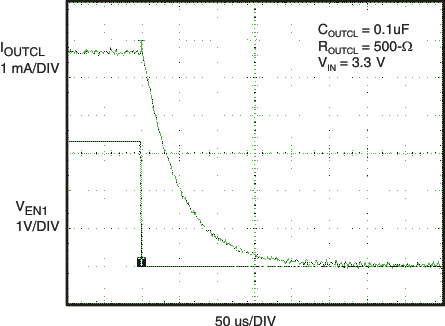 Figure 32. Current Limiter tOFF Response
Figure 32. Current Limiter tOFF Response
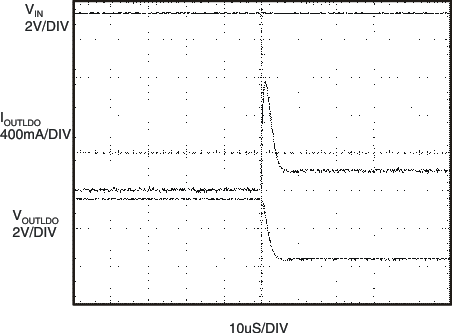 Figure 34. Short-Circuit Response Time
Figure 34. Short-Circuit Response Time(VOUTLDO Shorted to GND)
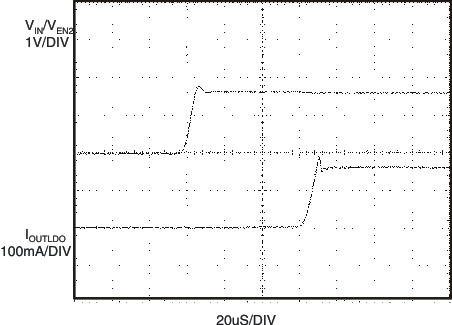 Figure 36. Short-Circuit Response Time (LDO Power Up to Hard Short) (TPS22949)
Figure 36. Short-Circuit Response Time (LDO Power Up to Hard Short) (TPS22949)
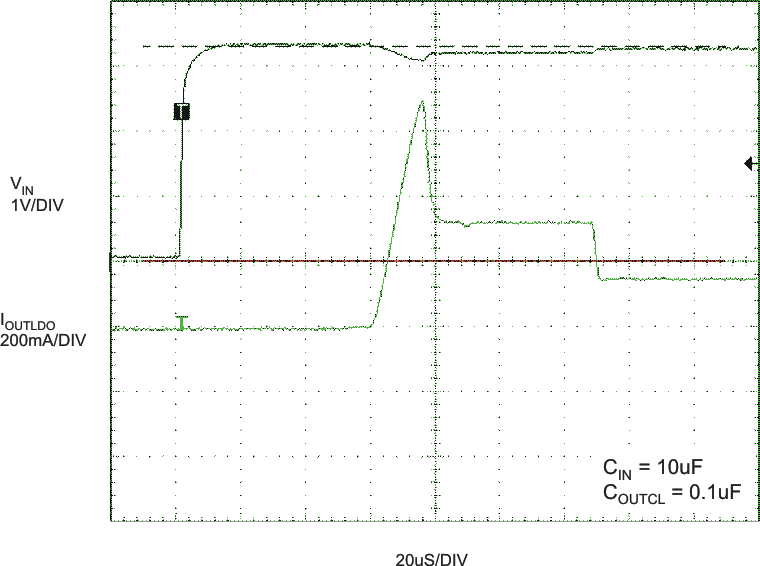 Figure 38. Short-Circuit Response Time (LDO Power Up to Hard Short) (TPS22949A)
Figure 38. Short-Circuit Response Time (LDO Power Up to Hard Short) (TPS22949A)
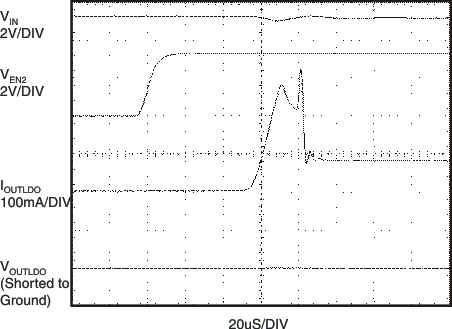 Figure 40. Current Limit Response Time (LDO)
Figure 40. Current Limit Response Time (LDO)